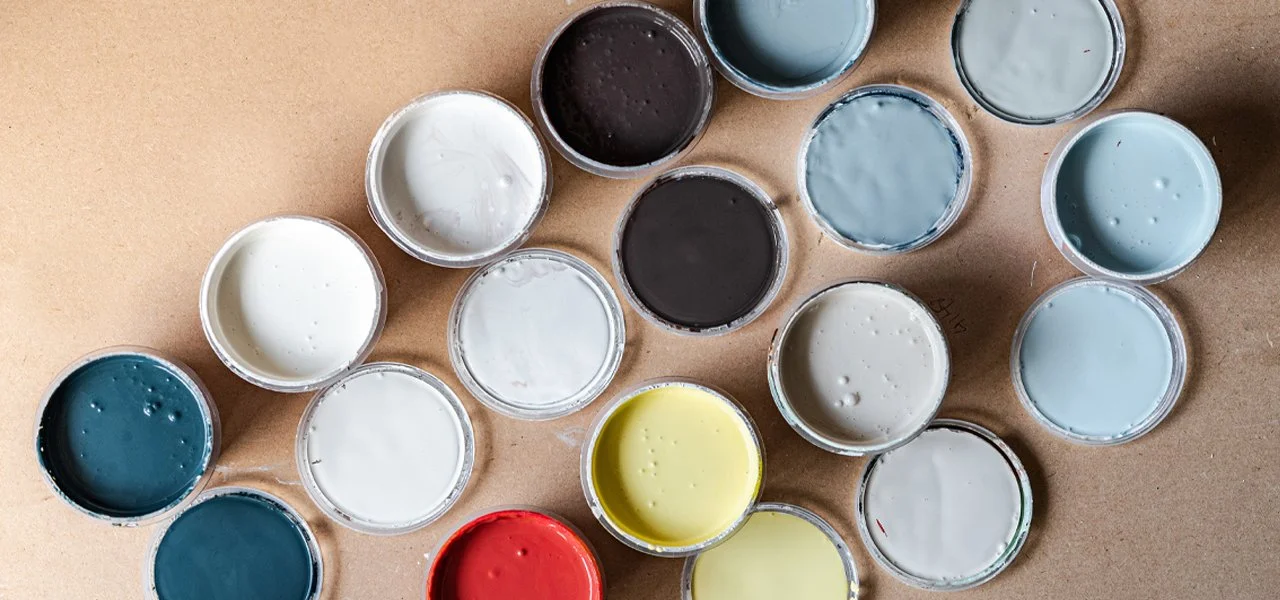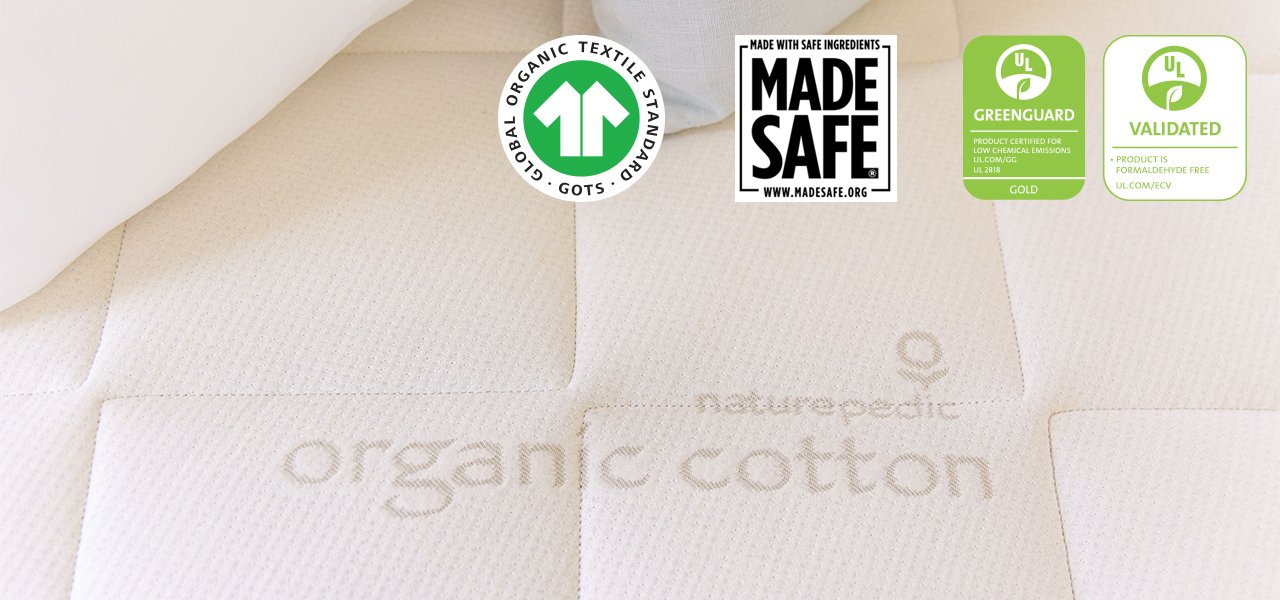By Organic Mattress and Bedding Manufacturer Naturepedic Organic
Have you ever walked into a new house and smelled a fresh coat of paint? Or maybe you have a favorite pine-scented cleaning product. These smells can be inviting. However you may want to stay clear of these “fresh” scents, along with a whole host of items within the average home because of a group of chemicals known as volatile organic compounds (VOCs).
Many household products and home furnishings, including conventional mattresses, contain harmful VOCs. Some VOCs give off a natural scent, some artificial, and some may not give off any scent at all. So … you can’t see them and often can’t smell them. Are VOCs really a problem when they’re tucked up inside a mattress? Yes, they are – for both people and the planet. Let’s discuss.
What Are VOCs?
VOCs represent a whole group of chemicals. Each one has its own toxicity and potential for causing different adverse health effects and negative environmental impact.
Products containing VOCs release chemicals into the air we breathe. This is known as “off-gassing.” Off-gassing chemicals are used in many common products that you find inside your home, such as:
· Mattresses
· Paint
· Carpeting and vinyl flooring
· Upholstery and foam
· Cleaning products
· Cosmetics
• Gasoline
Mattresses with Unsafe VOCs Levels Can Affect Human Health
People spend a third of their life sleeping, and conventional mattress can be a major culprit of VOCs in the home. Depending on the chemical and its toxicity, exposure to harmful VOCs can increase the risk for certain health problems. Short term exposure to certain VOCs can cause:
· Eye, nose and throat irritation
· Headaches
· Nausea/vomiting
· Dizziness
· Worsening of asthma symptoms
The risks of chronic exposure to high levels of VOCs can be much more serious, and include:
· Cancer
· Liver and kidney damage
· Central nervous system damage
VOCs Harm the Earth, Too
Not only are VOCs harmful to your personal health, but that of our planet, too. When exposed to sunlight, VOCs react with other gases and create ground-level smog. This can trigger diseases in plants, inhibit seed production and block fertilization. The EPA has regulations on some VOCs.
Methane, a greenhouse gas, is often released in conjunction with VOCs. Greenhouse gases are compounds that trap heat within the atmosphere, increasing global temperatures – A.K.A. global warming. VOC emissions can even lead to acid rain when they react with water, resulting in precipitation that washes over natural habitats, damaging fragile ecosystems. Non-organic mattresses often contain harmful VOCs. Certain materials make mattress production cheaper and easier but produce VOCs.
Three examples are:
· Formaldehyde – A known carcinogen used in many mattress glues and adhesives
· Flame retardant chemicals – Chemicals associated with chronic health problems that are added to polyurethane foam and other conventional mattresses
· Waterproofing – Often vinyl (phthalate plasticizers) or polyfluoroalkyl substances (PFAS), both linked to physical and developmental health concerns
Organic mattress manufacturers avoid taking these health and environmental risks. “We spent years developing proprietary equipment that allows us to make our mattress coils, even our individually wrapped coils, without glue, which often contains formaldehyde,” says Barry Cik, Founder and Technical director of Naturepedic, a manufacturer of organic mattresses and bedding.
Some organic mattress manufacturers go to extra measures to avoid VOCs. While both conventional and organic mattresses can contain flame retardant chemicals, Naturepedic bypasses these chemicals altogether by instead designing mattresses to meet all government flammability regulations without the addition of any flame retardants. To win the VOC war with regard to waterproofing, Naturepedic keeps little ones clean and dry by using a food-grade polyethylene waterproofing made from non-GMO sugarcane.
A quick way to vet any mattress – conventional or organic – for VOCs is to check if the product is GREENGUARD® Gold certified. This certification is the standard for chemical emissions and a GREENGUARD Gold certification means that the mattress meets the standard for acceptable levels of VOCs.
What to Look for When Selling an Organic Mattress
Not all organic mattresses are created equal. If you want to ensure the integrity of the mattresses you’re selling, Naturepedic recommends looking for credible third-party endorsements. These include:
· GOTS certified organic – The Global Organic Textile Standard (GOTS) is the world’s leading organic certification for fiber-based consumer products, including mattresses.
· MADE SAFE® certified non-toxic – The materials used in a MADE SAFE certified do not contain harmful ingredients or release vapors, gases, or by-products that could impact human health.
· GREENGUARD® Gold – This third-party certification program tests specifically for chemical emissions from consumer products and materials.
· UL Formaldehyde Free – This is a verification from UL Solutions specific to formaldehyde and it verifies a product meets the UL standard.
For families seeking to limit their VOC exposure, organic non-toxic mattresses are a great option for a good night’s sleep.




